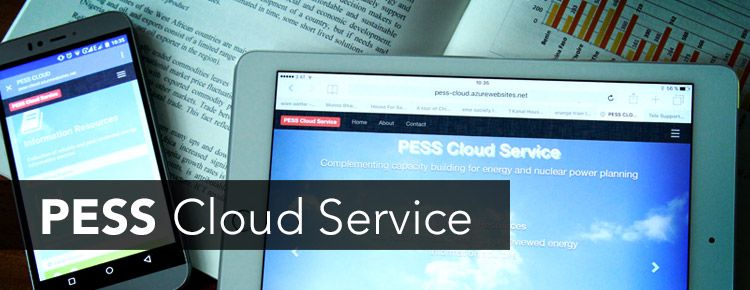IAEA tools for energy system planning and nuclear energy system assessments
The Section offers to Member States a wide-range of tools for integrated energy planning for sustainable development that are delivered through computer based software programs and manuals, trainings and e-learning sessions/platforms, upon request.
Over 135 countries and 20 international organizations have requested to use IAEA analytical tools for sustainable energy planning.
Model for Analysis of Energy Demand (MAED)
MAED evaluates future energy demands based on medium- to long-term scenarios of socioeconomic, technological and demographic development. Energy demand is disaggregated into a large number of end-use categories corresponding to different goods and services. The influences of social, economic and technological driving factors from a given scenario are estimated. These are combined for an overall picture of future energy demand growth. The computer manual for the Model for Analysis of Energy Demand (MAED-2) is available in English, French and Spanish.
Wien Automatic System Planning Package (WASP)
WASP is one of the most widely used models in developing countries for power system planning. Within constraints defined by the user, WASP determines the optimal long-term expansion plan for a power generating system. Constraints may include limited fuel availability, emission restrictions, system reliability requirements and other factors. Optimal expansion is determined by minimizing discounted total costs.
Model for Financial Analysis of Electric Sector Expansion Plans (FINPLAN)
In developing countries, financial constraints are often the most important obstacle to implementing optimal electricity expansion plans. FINPLAN helps assess the financial viability of plans and projects. It takes into account different financial sources - including export credits, commercial loans, bonds, equity and modern instruments like swaps - and calculates projected cash flows, balance sheet, financial ratios and other financial indicators.
Model for Energy Supply Strategy Alternatives and their General Environmental Impact (MESSAGE)
MESSAGE combines technologies and fuels to construct so-called "energy chains", making it possible to map energy flows from supply (resource extraction) to demand (energy services). The model can help design long term strategies by analysing cost optimal energy mixes, investment needs and other costs for new infrastructure, energy supply security, energy resource utilization, rate of introduction of new technologies (technology learning), environmental constraints.
Simplified Approach for Estimating Impacts of Electricity Generation (SIMPACTS)
SIMPACTS estimates and quantifies the health and environmental impacts and external costs of different electricity generation technologies. This tool is particularly useful for comparative analyses of fossil, nuclear and renewable electricity generation, siting of nuclear power plants or cost effectiveness of environmental mitigation policies.


